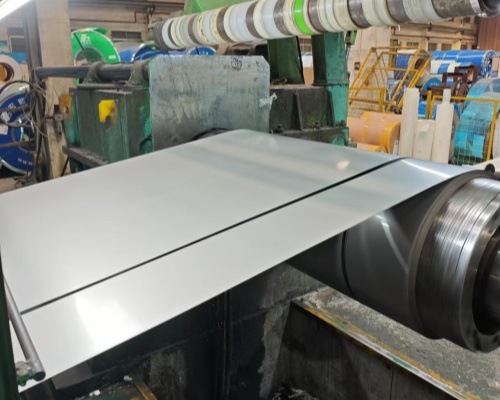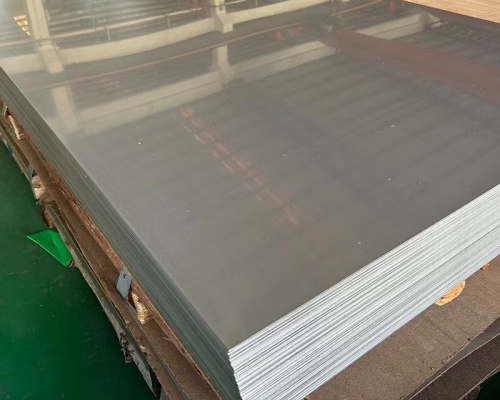Stainless steel is a versatile material used across various industries, and its grades differ based on their composition, corrosion resistance, and mechanical properties.This blog explores in depth the characteristics of common grades of stainless steel.
Part 1.201 Stainless Steel
1.Composition: Contains 16-18% chromium, 3.5-5.5% nickel, and higher levels of manganese (5.5-7.5%).
2.Properties:
Lower Corrosion Resistance: Compared to 304 and 316, it’s more prone to corrosion in harsh environments, especially chloride-rich conditions.
Cost-Effective: The reduced nickel content makes it cheaper than other austenitic grades.
Formability: Good workability and formability, making it suitable for applications that don’t involve extreme corrosion environments.
Magnetic: Unlike 304 and 316, it can be slightly magnetic in some forms.
3.Applications:
Kitchen appliances (e.g., sinks, cookware).
Architectural applications (e.g., decorative trim, building facades).
Automotive components (e.g., exhaust systems).
Part 2.304 Stainless Steel
1.Composition: Contains 18-20% chromium and 8-10.5% nickel.
2.Properties:
Good Corrosion Resistance: Particularly against oxidation and corrosion in a wide range of environments, though not ideal for chloride-rich conditions (like seawater).
Non-Magnetic: It’s non-magnetic in the annealed state but may become slightly magnetic when cold-worked.
Versatility: Can be welded easily and is highly durable in most environments.
Excellent Formability: One of the most formable stainless steels.
3.Applications:
Food processing equipment.
Pharmaceutical and chemical industries.
Kitchen utensils, sinks, and appliances.
Architectural components (cladding, handrails).
Part 3.316 Stainless Steel
1.Composition: Contains 16-18% chromium, 10-14% nickel, and 2-3% molybdenum.
2.Properties:
Superior Corrosion Resistance: Particularly resistant to corrosion in chloride environments (e.g., seawater) due to the addition of molybdenum.
Highly Resistant to Pitting and Crevice Corrosion: It’s ideal for marine and chemical environments.
Non-Magnetic: Like 304, it is generally non-magnetic, although cold working may make it slightly magnetic.
Strength: Excellent strength at higher temperatures.
3.Applications:
Marine environments (e.g., boat components, seawater systems).
Chemical processing plants.
Pharmaceutical equipment.
Medical devices (e.g., surgical instruments).
Part 4.410 Stainless steel
1.Composition: Contains 11.5-13.5% chromium, with very little to no nickel content.
2.Properties:
Magnetic: Unlike austenitic grades, 410 is magnetic due to its martensitic structure.
Moderate Corrosion Resistance: Not as resistant as 304 or 316 but has good resistance to atmospheric corrosion and mild acids.
High Strength: Can be hardened through heat treatment, making it stronger than austenitic grades.
Brittleness: It is more brittle than austenitic stainless steels, especially when not heat treated.
3.Applications:
Cutlery and kitchen tools.
Valve parts and other components requiring high strength.
Turbine blades, shafts, and other high-strength industrial components.
Part 5.430 Stainless Steel
1.Composition: Contains 16-18% chromium, with little to no nickel content.
2.Properties:
Moderate Corrosion Resistance: Offers good resistance to corrosion in low-temperature, mild environments but lacks the corrosion resistance of 304 or 316.
Magnetic: It is magnetic due to its ferritic structure.
Formability: Fairly easy to form and weld, although not as ductile as austenitic grades.
Cost-Effective: Often used as a lower-cost alternative to 304 in applications where extreme corrosion resistance is not required.
3.Applications:
Automotive parts (e.g., exhaust systems, trim).
Appliances (e.g., dishwashers, refrigerators).
Architectural trim and interior applications.
Part 6.Duplex 2205 Stainless Steel
1.Composition: Contains 22% chromium, 5-6% nickel, and 3% molybdenum.
2.Properties:
High Strength and Corrosion Resistance: It combines the best features of austenitic and ferritic steels, offering excellent resistance to chloride stress corrosion cracking and high strength.
Dual-Phase Microstructure: Features both austenitic and ferritic phases, providing better resistance to pitting and crevice corrosion compared to austenitic grades.
Magnetic: Due to its ferritic content, it is magnetic.
3.Applications:
Chemical processing equipment.
Marine applications.
Oil and gas industries (e.g., pipelines, heat exchangers).
Each grade of stainless steel is designed to perform in specific conditions, balancing factors like corrosion resistance, formability, strength, and cost. While 304 and 316 are versatile and widely used due to their balance of properties, grades like 201, 410, and 430 are more cost-effective for certain applications where corrosion resistance or high strength isn’t the primary concern. For demanding environments, duplex and high-alloy grades like 2205 and 904L offer superior performance.
Post time: Jan-13-2025






